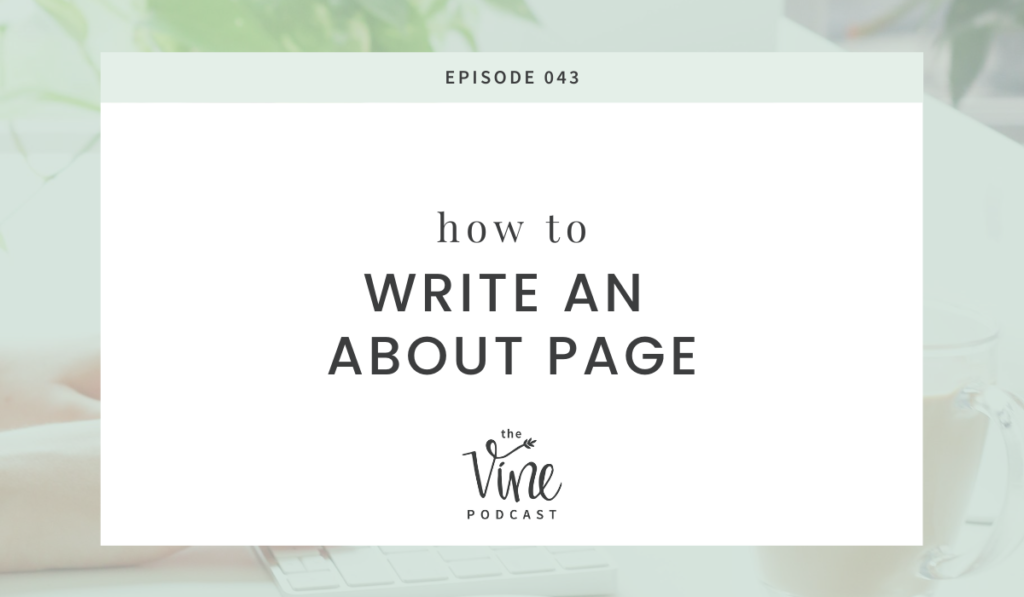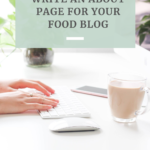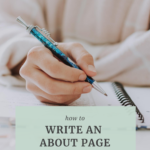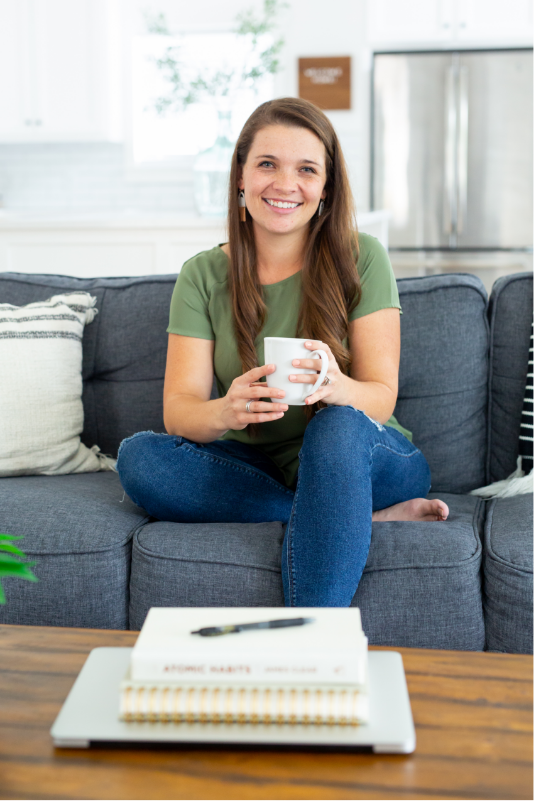Do you have an about page you are actually proud of? I hear it all the time that writing your about page is a huge struggle. In today’s episode I’ll share some tips on writing an about page that will help you actually connect with your audience and convert more people into loyal followers and subscribers!


Can’t listen to the episode? Read on for the transcript!
The About Page
I can honestly say I don’t know many food bloggers who love their about page. It’s one of the most neglected pages on most food blogs but it’s such an important page!
I’ve covered a few other pages on the podcast before, so if you’re interested in those head back to those episodes for what should be on your homepage and how to design your recipe index.
While the about page may not end up in the top traffic for a given month, it’s important to have a well thought out about page for a few reasons.
Connection
Why is someone coming to your about page?
Someone generally lands on your about page when they are looking to learn more about your brand.
This is also true about your homepage, so these two pages do have some similarities but we will break down how they are a bit different in a few minutes.
The biggest reason that your about page is so important for connection is that your about page isn’t really about you.

This is one of the most counterintuitive things. An about me page that isn’t about you?
Rethink the way you think about this page. For a lot of you who started blogging more than a few years ago, you know blogging has changed a lot in the last few years. Unless you are a personal brand or lifestyle blogger, your blog is not about you at all.
You should be the face of your brand, but that’s different than you brand being about you.
Your about page should tell a story that connects your reader’s struggle with your story.
When you shift the way you view your about page to being about your reader and what they are struggling with, you position yourself as an expert and someone who can help your reader.
The biggest mistake I see people making with an about page is that it becomes a resume or a place to put their accolades. While it seems like this may build trust, it actually just disconnects you from your audience and can potentially put you up on a pedestal above where your audience feels they are.
Let’s look at a few more reasons before we jump into what should be on your about page.
Brand Messaging
Brand messaging is a great thing to add to your about page and to weave into the story that you are telling on your about page.
If you’ve been around the podcast for a while, you know I talk about brand messaging a lot. Brand messaging is essentially your brand’s positioning. It’s what makes your brand different than others. When I say different, I don’t mean your niche or what sets you apart from other types of blogs.
If I were to line up 5 food blogs within the same type of recipes, what would make your blog stand out?
When I’m working with clients, this is part of the strategy phase of the design process.
Brand messaging is a compilation of phrases that explain who you are, who your audience is, what type of content you share and even down to the ingredients that you use and why.
When someone lands on your about page and they are hearing about why you choose to use certain ingredients or they are listening to your journey, they are going to be much more compelled to stick around and subscribe.
With your about page you are crafting a story and helping your reader see how they fit into your brand.

Conversions
This is when you are converting on a goal. Some goals may be:
- subscribing to your email list
- following you on Instagram
- dig around into more content
Whatever your goal is, you want this to be front and center on your website.
I highly suggest you use your about page to get people to subscribe to your email list. When you paint the picture of your brand, it’s going to be a natural fit to ask someone to subscribe. If you can only get someone to do one thing on your about page, you want it to be to get someone on your email list.
How to Write Your About Page
I loved this outline from Do Six Figures. This is what I’ve taken and tweaked for my own clients.
Here is what should be on your about page:
1. Introduction and Friendly Image
This should be a brief introduction of your brand and lead right into introducing your audience’s struggle.
2. Introduce the audience’s struggle
This will build empathy with your audience and show your audience that you relate to their story. This is the first section that you are really separating out your ideal audience from the random people who may have landed on your site.
3. Your personal story
Share more of your story that relates to what the audience struggles with. How did you go through something similar and overcame it? This section should be 3-4 sentences max.
4. Action photo
5. “What’s in it for me?”
How can you help your readers, how can you help solve their pain points?
6. Call to action
This is where you tell your audience how they can become a part of this journey. Do you have a freebie you want them to sign up for? Do you want them to follow you on Instagram? Whatever that main call to action is, wrap up the page with that.
Where should you link to your about page?
Now that you have spent time creating this page, make sure you promote it! Here are a few places you can share this new page.
- Your main navigation
- The content of your homepage
- Sidebar bio
- Your footer
- Instagram links page





Hello Madison, these are great tips you have shared. I like the irony of about me page not really being about you and I agree that there should be the connection. Otherwise, it might not be really interesting for your audience. Here is another article explaining how to start the About Me page. If I may share it here >> https://www.leahcanseco.com/how-to-write-an-about-me-page-for-a-blog Thank you and Cheers!